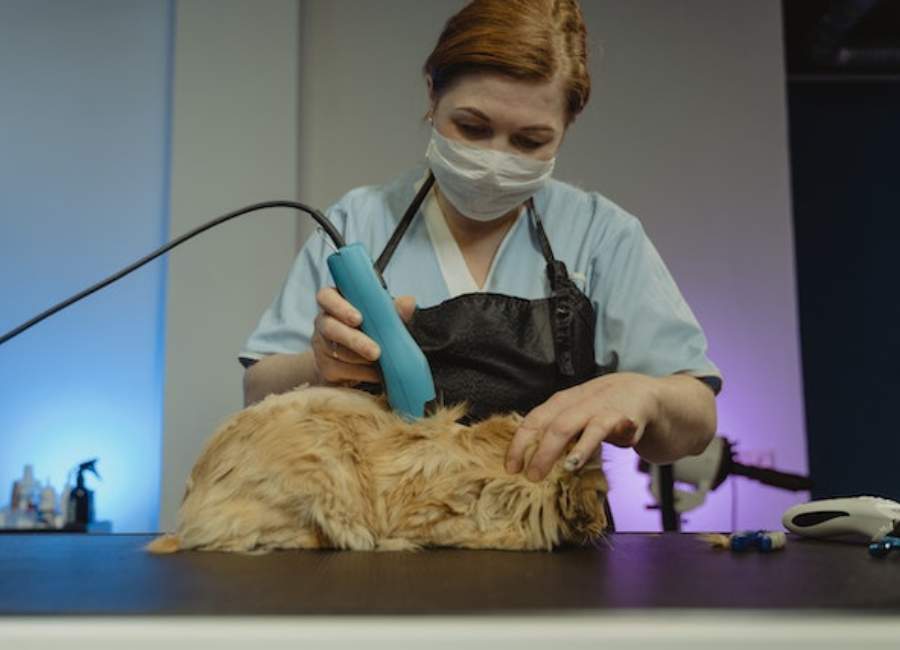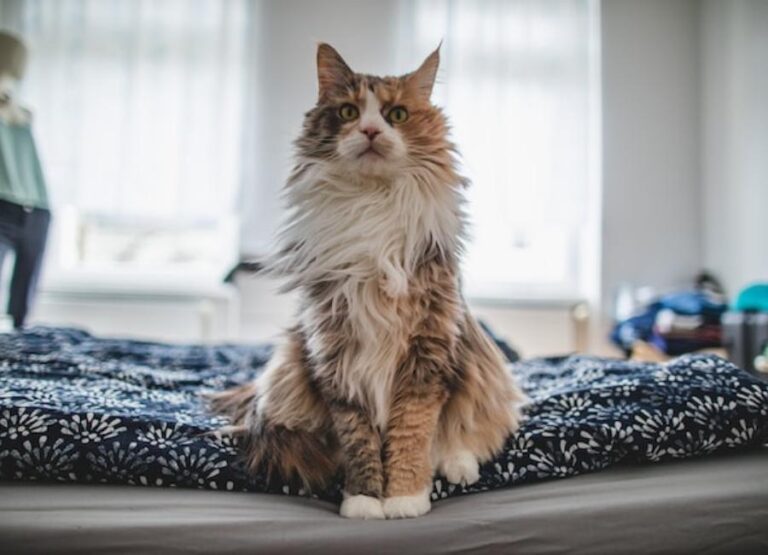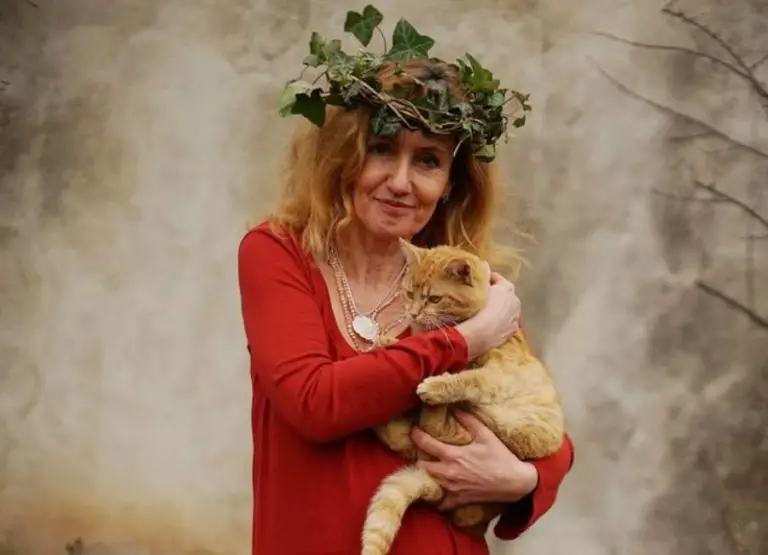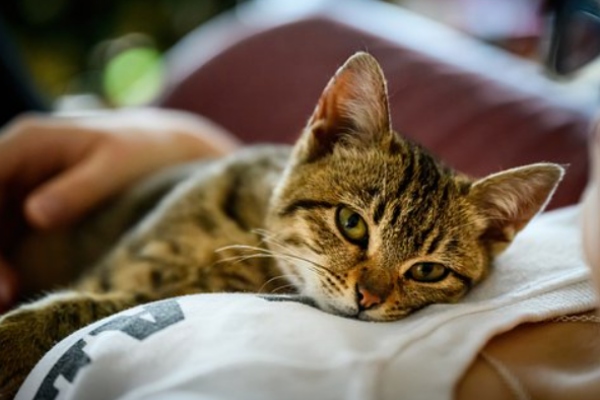11 Common Cat Behavior After Shaving & Tips

Does your cat behave differently after a grooming appointment? If so, you are not by yourself.
Several cat owners have seen alterations in their cat’s behavior following grooming or trimming.
These alterations can be rather alarming, ranging from increased hostility to hiding and vomiting.
We’ll discuss the potential behaviors, and causes of these changes in this blog article, as well as solutions.
Read on to find out more if you’re concerned about your cat’s behavior following a trip to the groomer.
Causes of changes in cat behavior after shaving
The tension and discomfort involved with shaving are one of the main causes of changes in a cat’s behavior following shaving.
Cats are sensitive to environmental changes, so the abrupt loss of fur may come as a shock to them.
Also, they could experience depressive or anxious periods because they feel more exposed and defenseless.
Given that cats are more sensitive to temperature changes than other animals, the quick change in temperature may also be a contributing factor.
Common Cat Behavior After Shaving
Here are some common cat behavior after shaving you should expect:
Changes in behavior toward other cats
Depending on their relationship with the cat, other cats may respond to a shaved cat differently.
When faced with a cat that has been shaved, some cats may become more territorial or aggressive, while others may become more caring or protective.
Social dynamics may shift as a result, thus this needs to be carefully watched.
Changes in sleep patterns
Cats’ sleep patterns can also be impacted by the stress and discomfort that comes with cat shaving.
Following shaving, individuals might sleep longer or shorter than normal or have problems falling asleep.
This should be properly watched as it may indicate stress or discomfort.
After being shaved, cats may alter their social behavior.
While some may become more attached and seek out their owners’ attention, others may become more reclusive and shun social situations.
Changes in appetite
Following a haircut, some cats’ appetites could vary.
This can be the result of stress or discomfort from grooming.
The dietary habits of their cats should be closely observed by owners, who should seek advice from their veterinarian if any substantial changes are observed.
Reduced Confidence
Fur plays a significant role in a cat’s look and aids in communication with both people and other cats.
They could feel less self-assured and less able to communicate without their fur.
This may cause them to alter their behavior and withdraw or avoid social situations.
Increased Grooming
Cats may spend more time grooming themselves to regrow their coat after being shaved.
This is due to the fact that grooming is a behavior that cats value, and they can be doing it to encourage hair development or get rid of any loose hair.
To prevent over-grooming, which can cause skin irritation, owners may need to keep an eye on their cats’ grooming habits.
Learn more about how to reduce excessive shedding in cats.
Increased Vocalization
After getting their fur shaved, some cats may meow more, maybe out of discomfort or uncertainty at their new appearance.
This behavior is typically transient and should stop as the cat gets used to their new appearance.
Increased Attention-Seeking
After being shaved, some cats might demand greater attention from their owners, probably because they feel exposed or insecure without their fur covering.
Cat owners should pay their pets more love and attention during this time to make them feel safer.
Increased Hiding
Some cats may feel self-conscious or uncomfortable about their looks after getting their fur shaved, and they may hide more than normal.
If a shaved cat needs some privacy, owners should provide a secure and cozy area for them to retreat to.
Learn more about why cats may shed excessively.
Change in Litter Box Habits
Cats that have had their fur removed could be more sensitive to the texture of the litter or feel more exposed.
Cat owners should keep an eye on their cats’ toilet habits and make any required changes to the litter or the placement of the toilet.
Increased Vulnerability and Uncomfortable
Cats could feel more exposed to predators or other animals in their area without their fur covering.
When investigating their environment, especially if they are accustomed to being outside, they could be more circumspect or timid.
Owners should keep a careful eye on their cats and give them a safe, secure environment, so they can get used to their new look.
Learn more about how cats love to be petted.
Tips for helping a cat adjust after being shaved
Here are some tips to help your cat adjust after being shaved:
- Keep your cat warm: Keep your cat warm because, following a shaving, cats may feel frightened, cold, and exposed. Assure their warmth by giving them extra blankets or sweaters.
- Monitor their behavior: After having their fur shaved, pay special attention to your cat’s behavior. To spot pain, keep an eye out for behaviors like excessive licking, hiding, or loss of appetite.
- Give them a quiet space: Make sure your cat has a calm, cozy place to go when they’re feeling anxious or overwhelmed.
- Keep your cat inside: It’s recommended to keep your cat inside until their fur grows back because they may feel cold and uncomfortable after being shaved.
- Offer a familiar scent: Put familiar objects in their area, such as their bed or favorite toys, to make them feel more at ease. Give a familiar aroma.
- Offer extra bedding: Provide extra blankets or bedding to help your cat feel comfortable and secure.
- Slowly reintroduce them to other pets: Gently reintroduce them to other pets to prevent any potential confrontations. If you have other pets in your home, gradually reintroduce your cat to them.
- Offer plenty of love and attention: Spend additional time with your cat and give them lots of love and attention to make them feel safe and comfortable.
- Keep them hydrated: If your cat isn’t drinking as much because they are stressed out or in pain, make sure they have access to plenty of fresh water to help them stay hydrated.
- Feed them a balanced diet: Feeding them a balanced diet can improve their overall health and hasten the growth of their fur. Ensure that your cat is consuming a balanced diet.
- Be patient: Don’t rush your cat’s adaptation. Give it time. Your cat will quickly feel at ease and content once more with a little time and tenderness.
Learn more about why your cat stares at you while you sleep.
What to expect after shaving a cat
After having its fur shaved, a cat commonly feels a little anxious, perplexed, and perhaps even angry.
The cat may lick, scratch, or bite the shaved area, therefore it’s important to keep the area clean and under observation.
If the cat had to have its fur removed for medical reasons, it’s very important to follow the veterinarian’s aftercare instructions.
Keep the shaved area out of direct sunlight and provide the cat with plenty of warmth and comfort.
Moreover, regular grooming of the cat is required to encourage even hair development and prevent matting.
Learn more about why your cat is lethargic and not eating or drinking.
Conclusion
In conclusion, it’s critical to be aware of any behavioral alterations that can occur after a cat is trimmed or shaved.
It is best to speak with your veterinarian to identify the cause and the most effective course of action if you detect any behavioral changes in your cat, such as increased aggression, hiding, or vomiting.
Cats can adapt to their new appearance over time with the correct care and empathy and continue to be the devoted and endearing friends we all know and love.




![How Do Cats Get Leukemia [9 Top Ways] How Do Cats Get Leukemia](https://petcreeks.com/wp-content/uploads/2023/04/How-Do-Cats-Get-Leukemia-768x555.jpg)

![When Do Cats Sleep The Most [Answered] When Do Cats Sleep The Most](https://petcreeks.com/wp-content/uploads/2023/10/keenan-barber-M7GJFakZObA-unsplash.jpg)